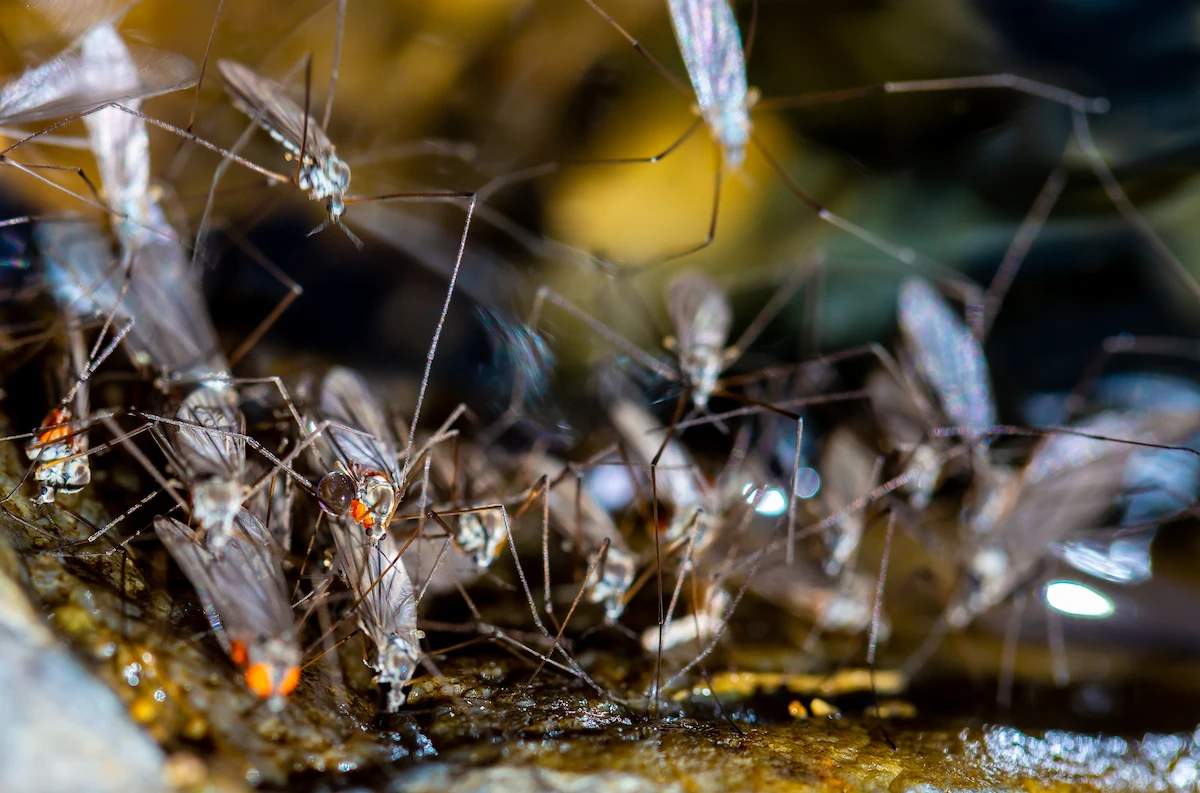Mosquitoes are more than just a nuisance — they can turn a beautiful pond into a breeding ground for disease and discomfort. If you’re managing a golf course, HOA pond, or private lake, pond mosquito controlshould be a top priority in your property’s maintenance strategy.

In this guide, we’ll walk you through the best methods for mosquito prevention and removal, explain how to get rid of mosquito larvae, and recommend professional solutions for ongoing mosquito control for pondsand lakes. We’ll also answer common questions like what eats mosquito larvae, how to keep mosquitoes out of your pond, and when to call the experts at Pond Gurufor a site visit.
Ponds and lakes are ideal mosquito breeding grounds, especially when the water is stagnant and shallow. Female mosquitoes lay eggs on still water surfaces, and in just a few days, larvae hatch and begin to develop underwater.
Pond mosquito controlstarts with understanding what attracts mosquitoes in the first place:
Stopping mosquitoes at the source means eliminating these breeding conditions before the next generation of mosquitoes takes flight.

If you already see wiggling larvae in the water, it’s time to act fast. Here’s how to kill mosquito larvae in pondenvironments safely and effectively.
Mosquito killer for pondsdoesn’t have to mean harsh chemicals. Products containing Bacillus thuringiensis israelensis(BTI) target mosquito larvae without harming fish, plants, or wildlife.
Aeration systemsincrease water movement, oxygen levels, and circulation — all of which make it difficult for larvae to survive. If you’re searching for how to keep mosquitoes out of pondwater naturally, aeration is one of the most effective methods.
Remove floating debris, dead leaves, and algae mats that can shelter larvae. Regular cleaning should be part of your pond maintenanceroutine.
Another natural method for pond mosquito controlis to introduce species that feed on mosquito larvae.
If you’re managing a stocked pond or large waterbody, incorporating these predators is an eco-friendly way to reduce mosquito populations without chemicals.

If you’re wondering how to keep mosquitoes out of pondwater year-round, here are steps for lasting prevention:
Aeration not only improves water quality but disrupts mosquito habitat. Systems should be professionally sized and installed for maximum impact in large ponds or lakes.
Tall grasses and weeds along the pond’s edge provide shelter for adult mosquitoes and make larval control harder. Routine trimming and buffer planting can help.
Mosquitoes thrive in nutrient-rich waterwith heavy organic buildup. Reducing fertilizers, limiting runoff, and applying beneficial bacteria can reduce larval habitat.
The best mosquito control servicesare proactive, not reactive. Seasonal monitoring, larvicide treatments, and algae control work together to stop mosquito life cycles before they become a problem.
Managing mosquitoes at the source — the pond or lake — requires more than just backyard solutions. At Pond Guru, we offer site-specific lake management servicesthat address mosquito issues from the water up.
Our licensed technicians can:
Whether you’re an HOA, golf course, or private landowner, we’ll help you reclaim your pond from mosquitoes and restore it to a healthy, balanced aquatic environment.

Fish like mosquito fish, bluegill, and bass, as well as dragonfly nymphs and frogs, help naturally reduce mosquito larvae populations.
Use BTI-based products, increase aeration, and introduce natural predators. Avoid chemical treatments that can impact aquatic life.
Yes — green pond watercaused by algae can shelter mosquito larvae. Algae control is a key part of mosquito management.
Keep the water moving with aeration, manage shoreline vegetation, and remove organic debris regularly.
If mosquitoes are persistent despite your efforts — especially in large ponds or lakes — it’s time to consult lake management serviceslike Pond Guru for a custom plan.